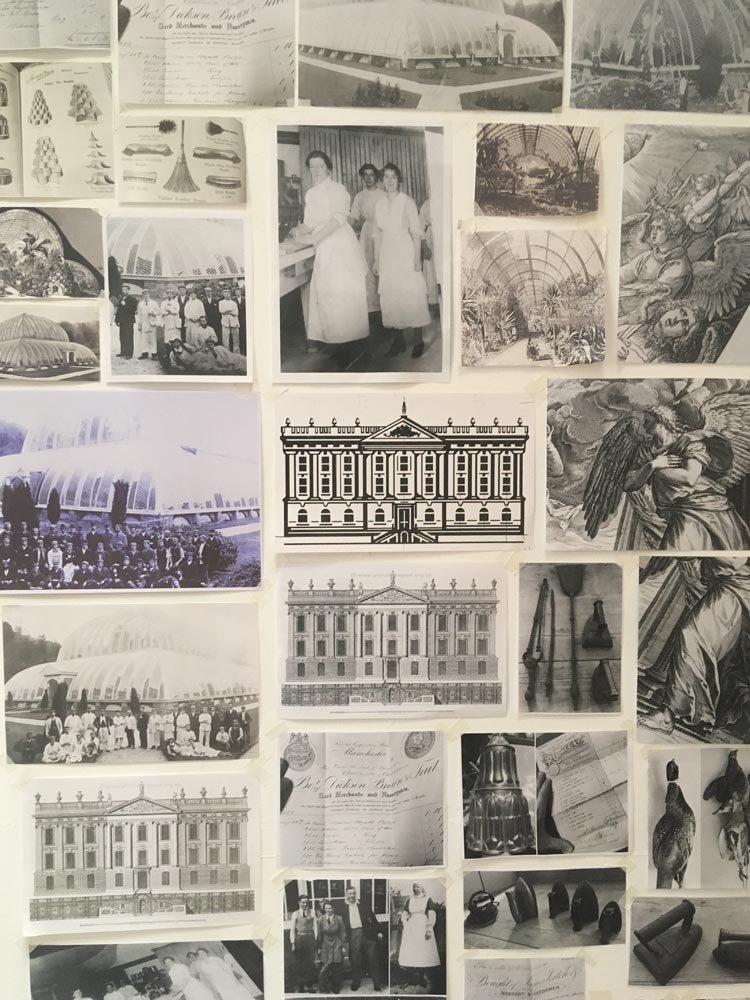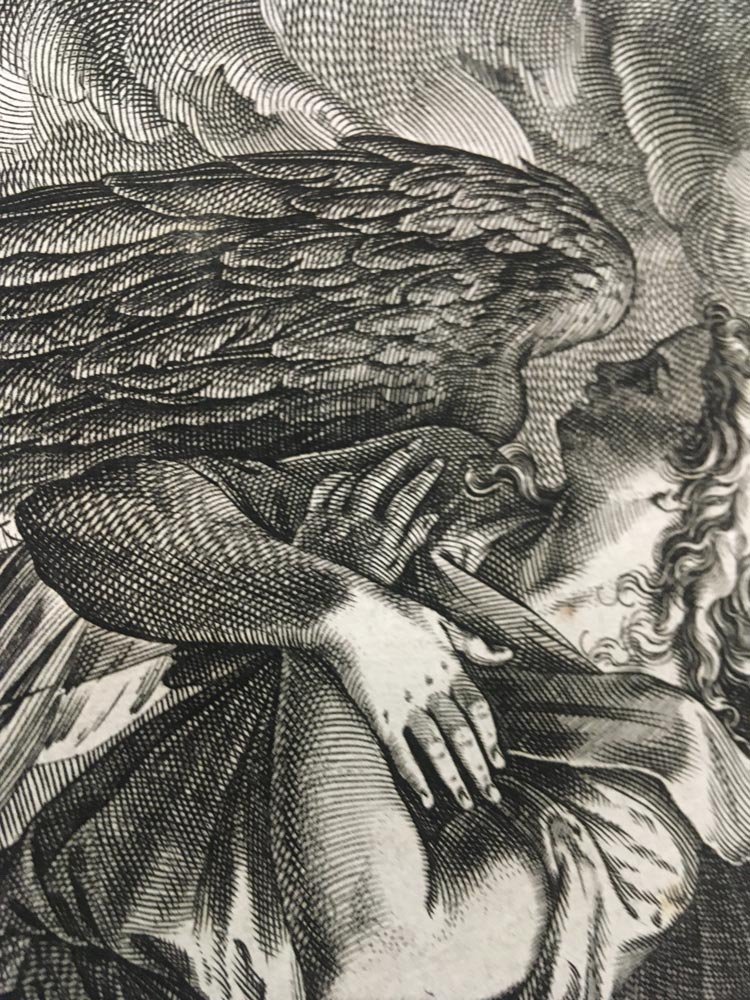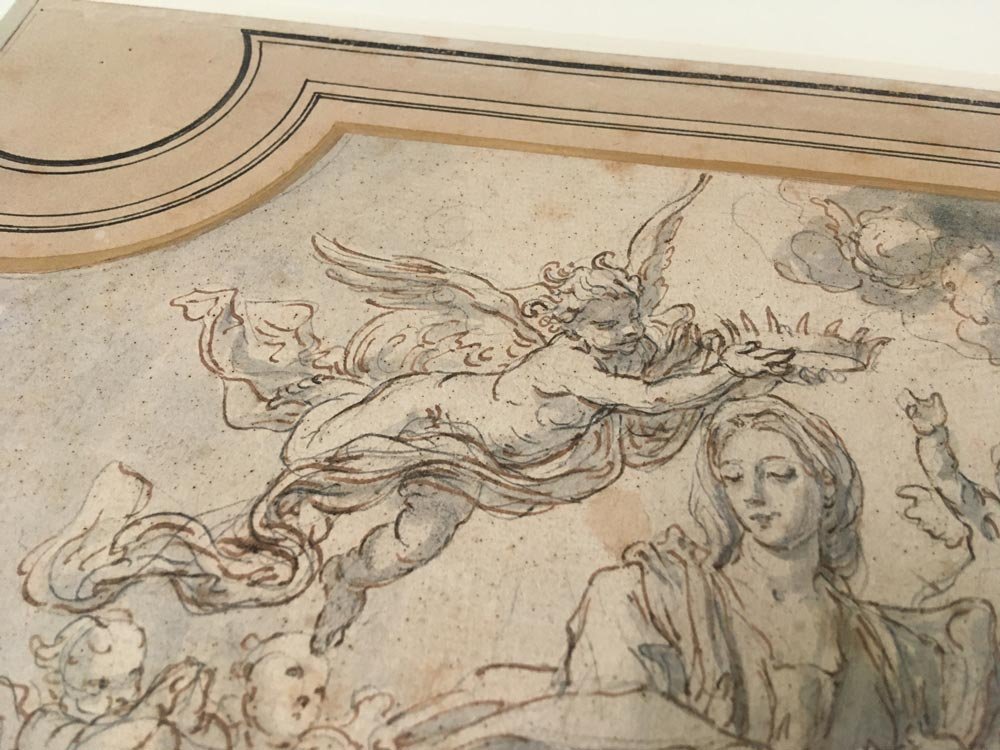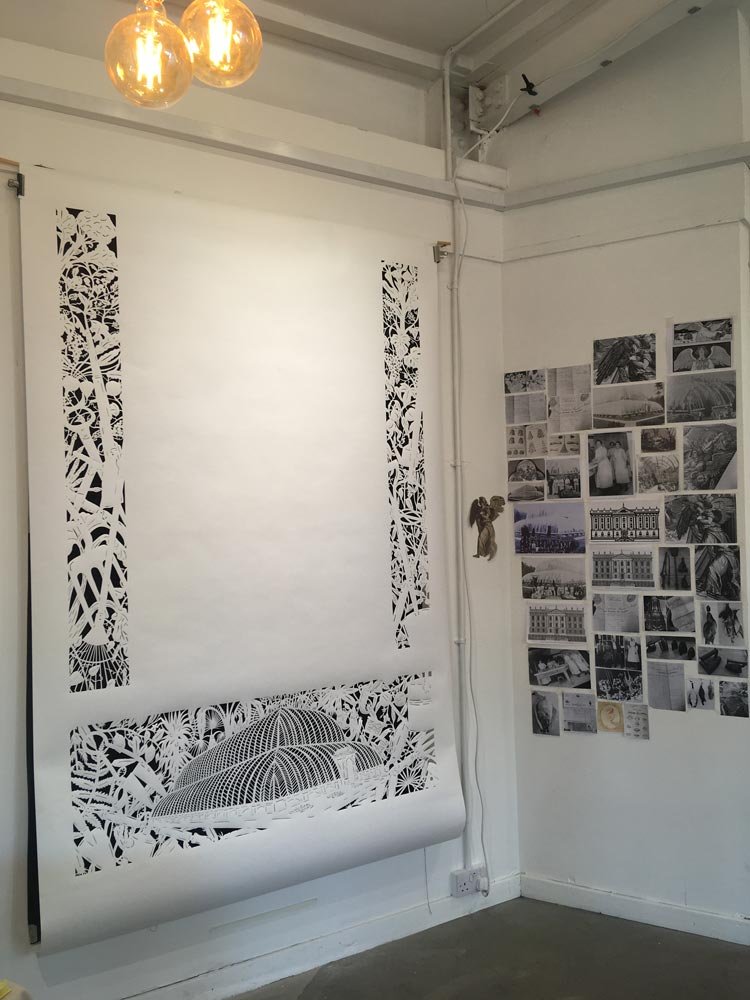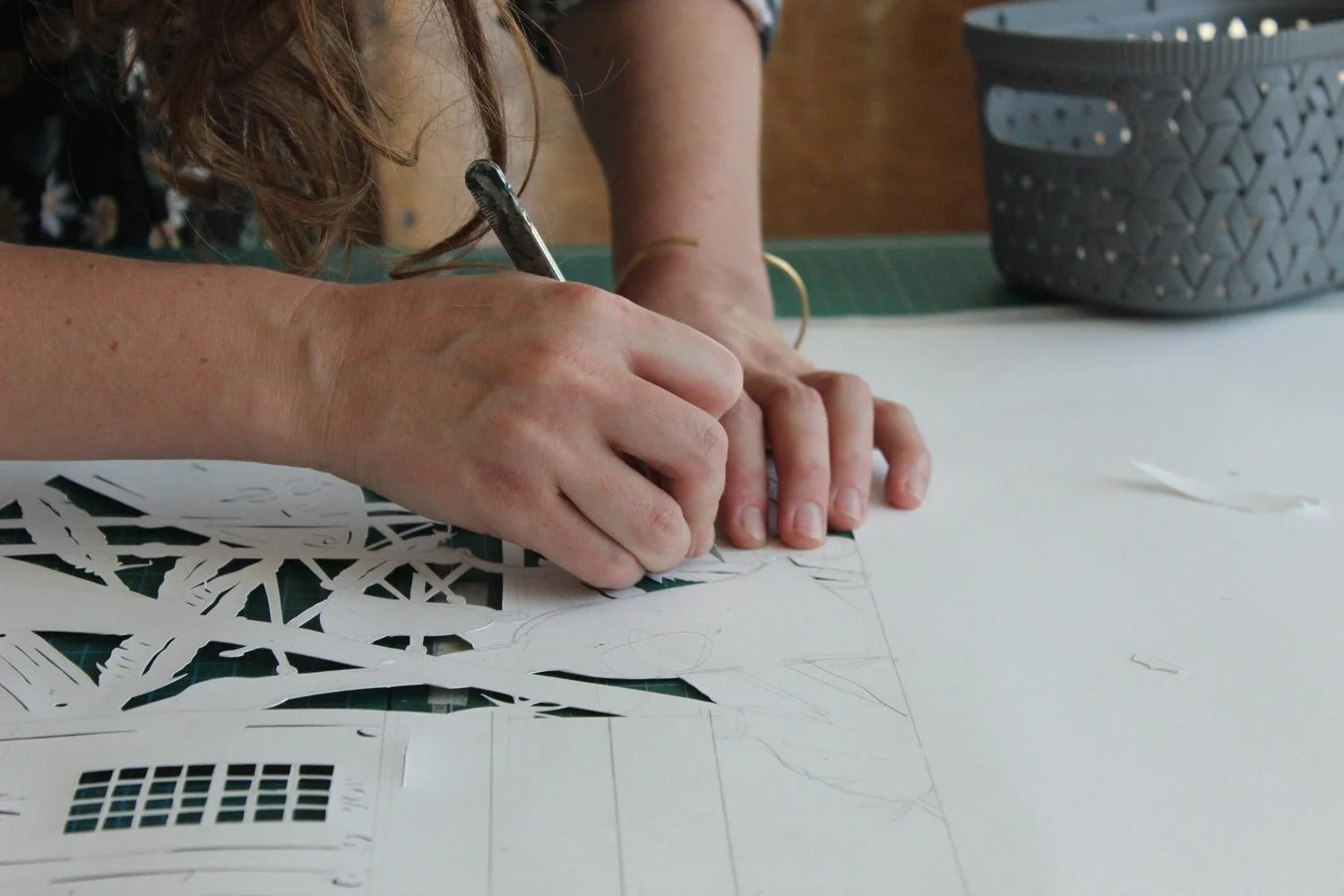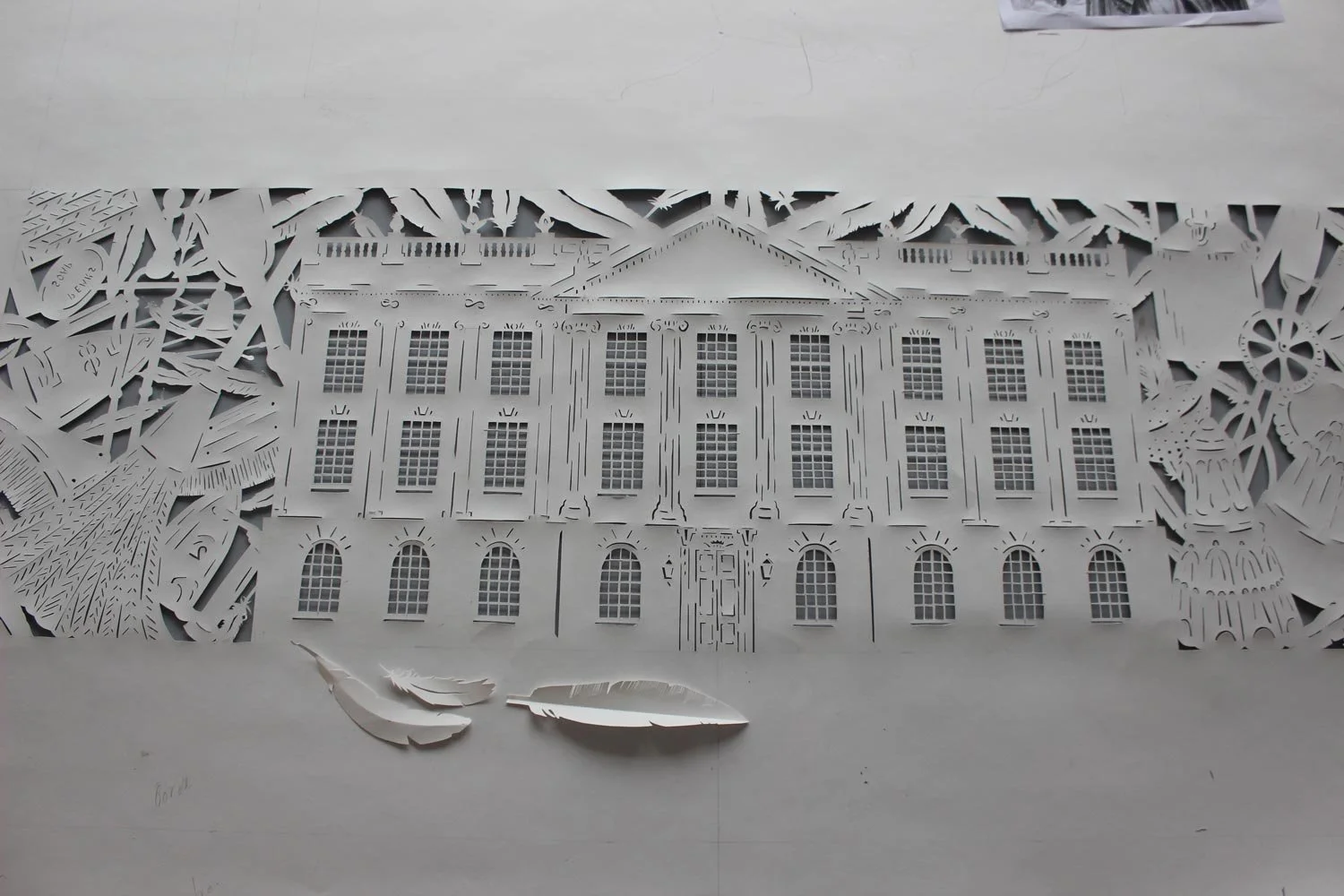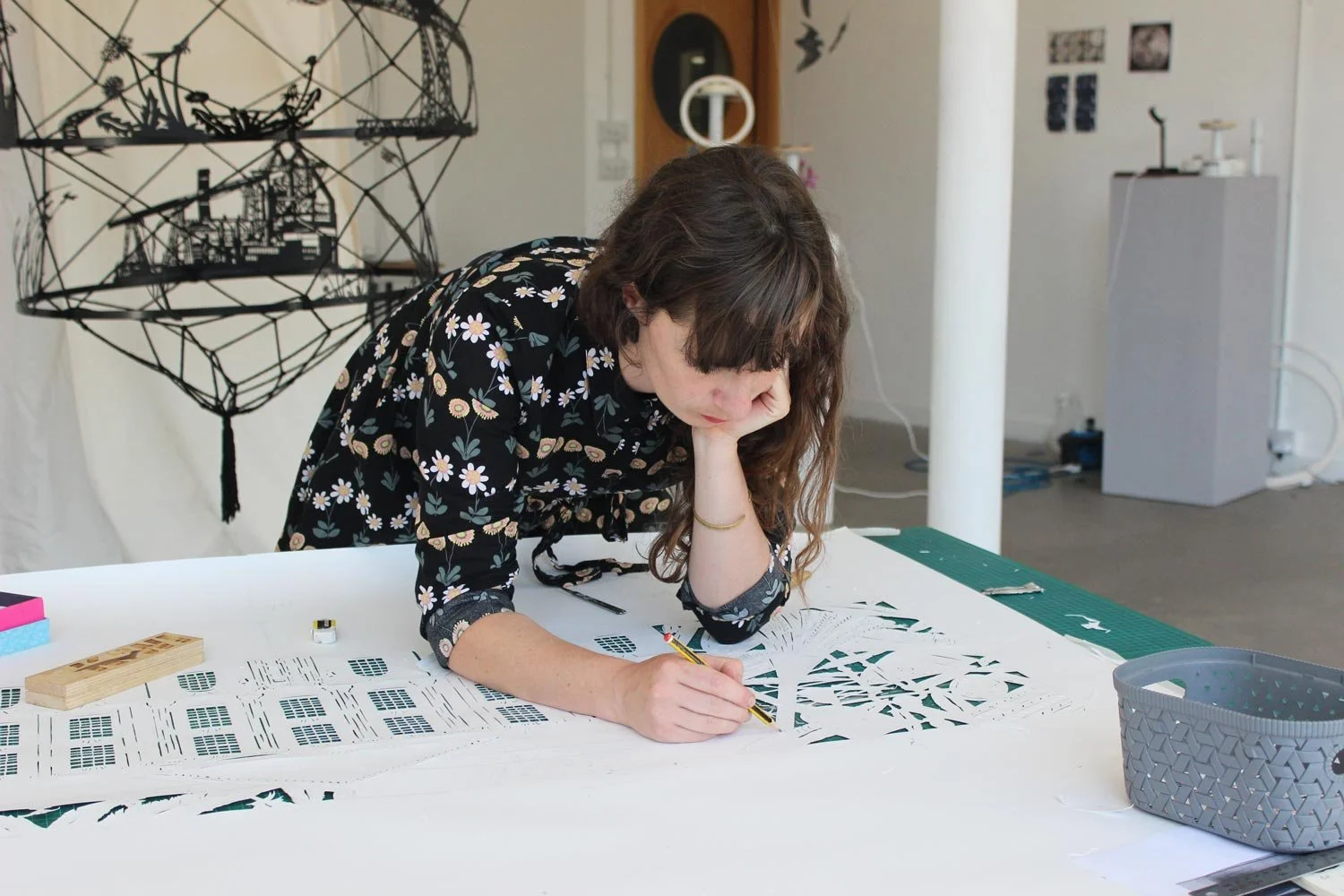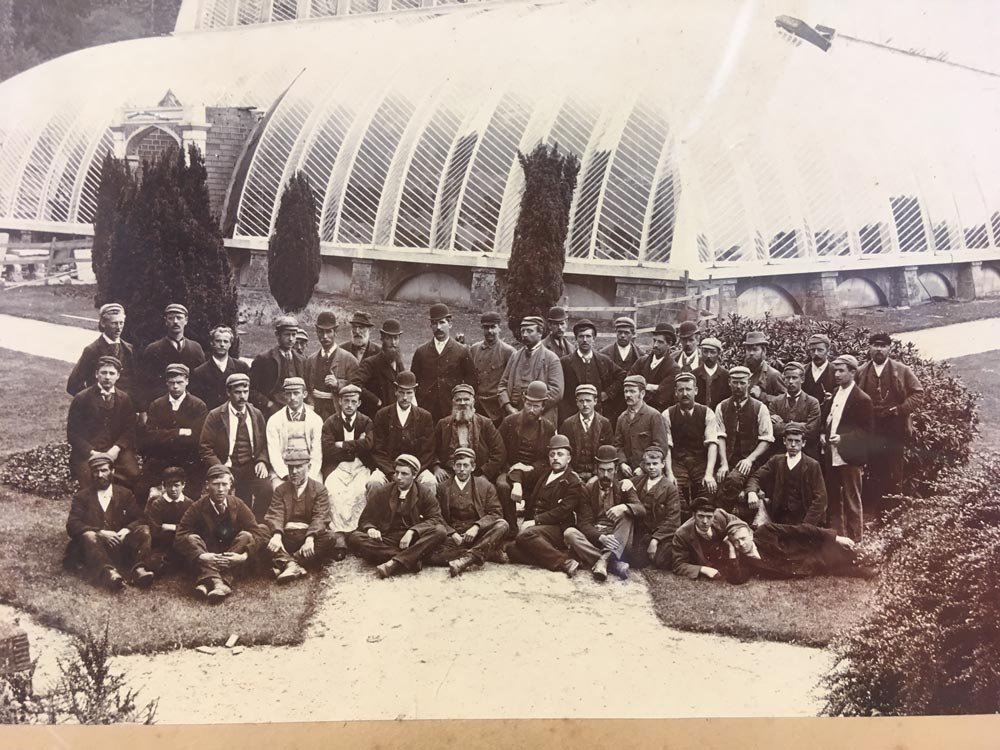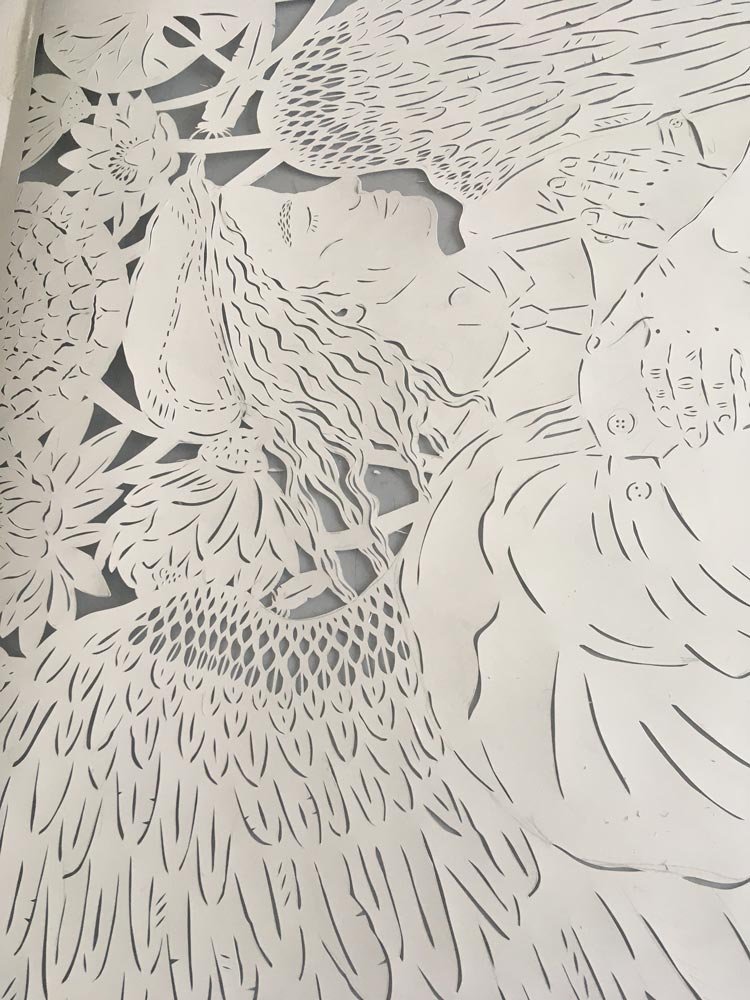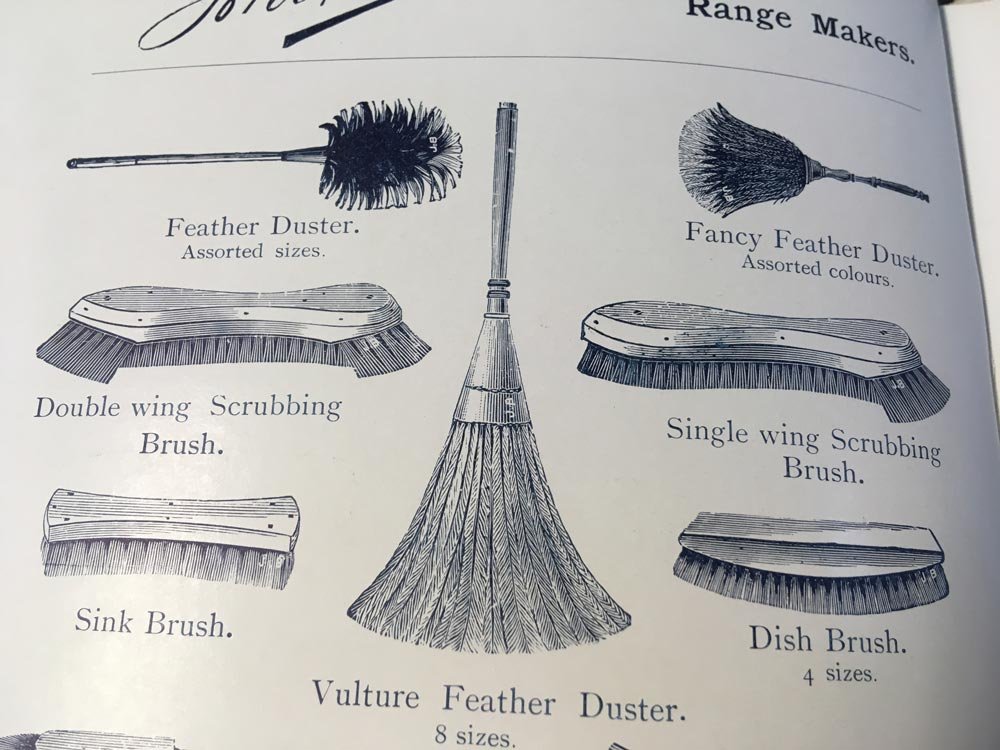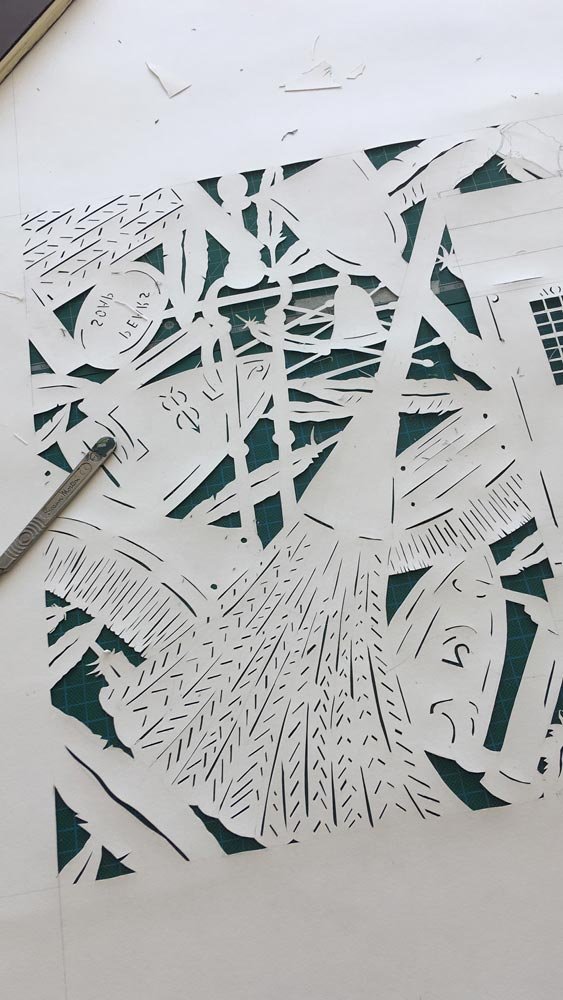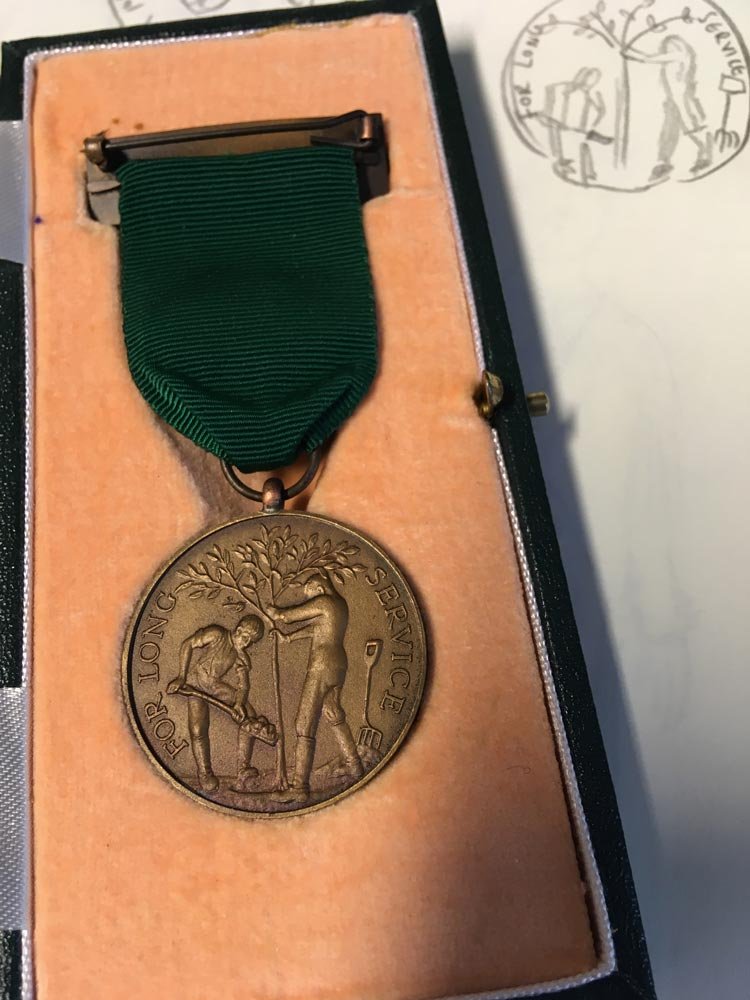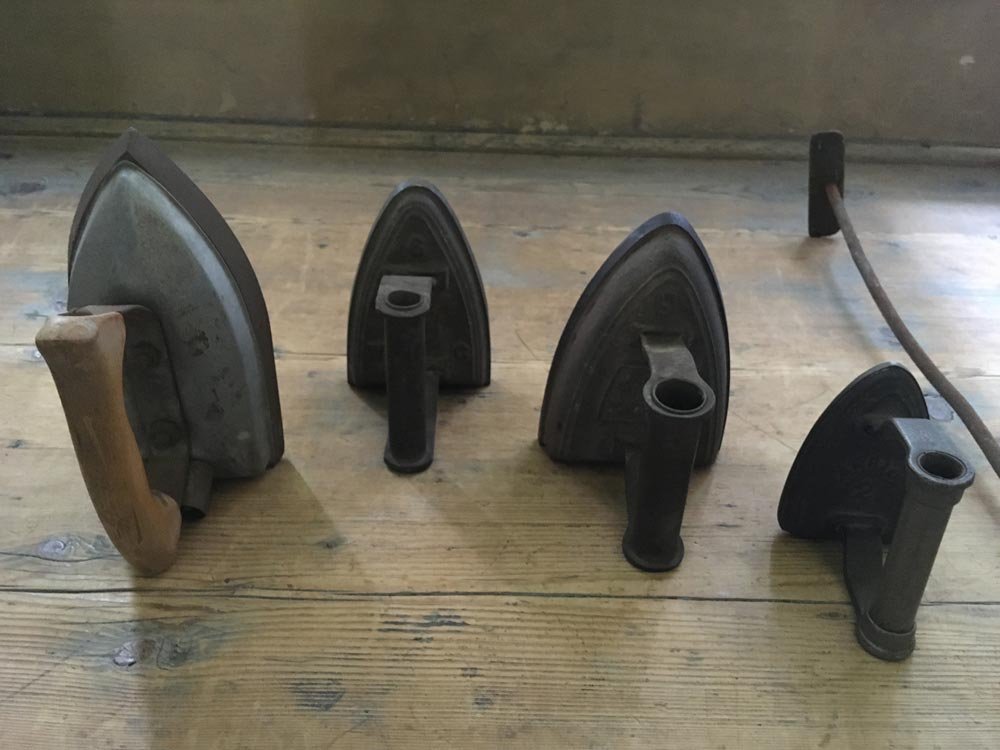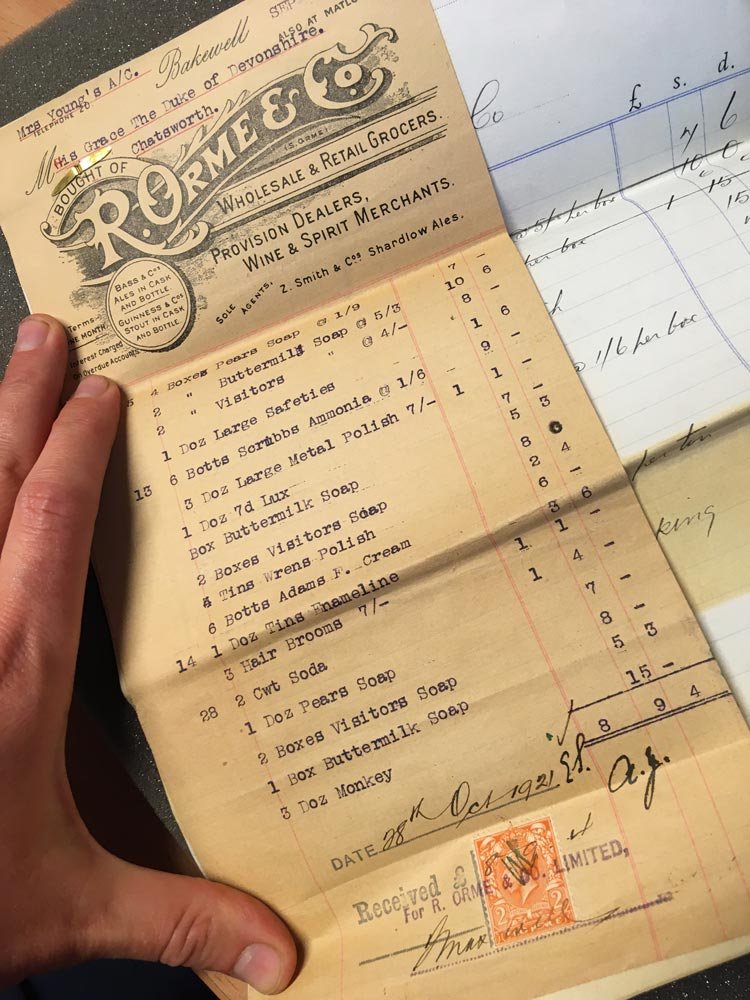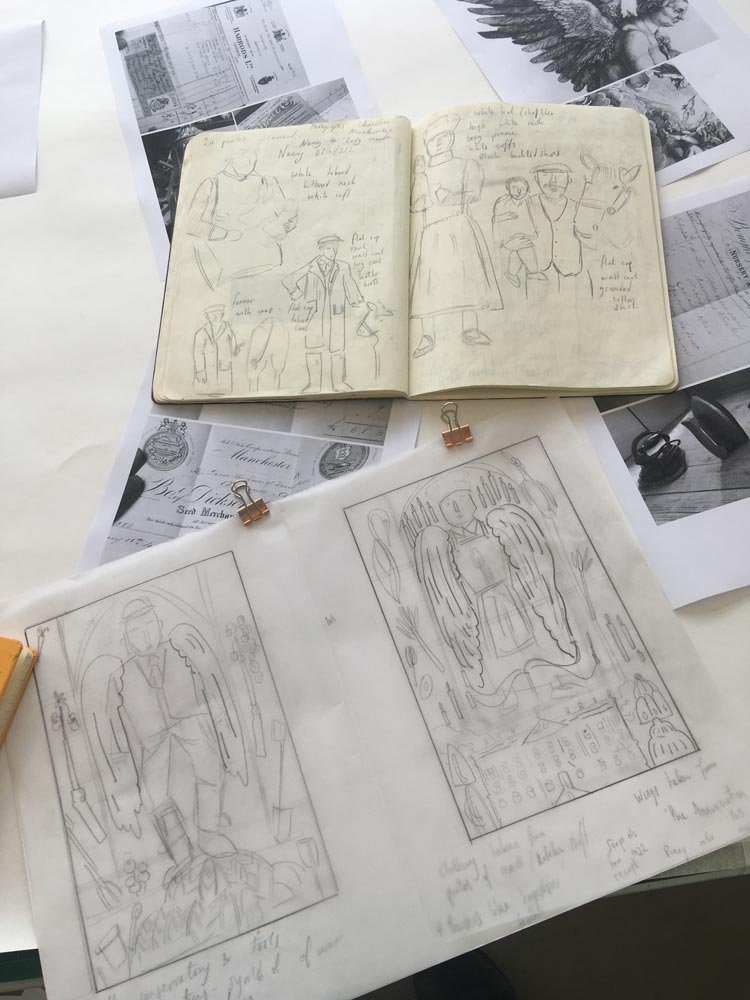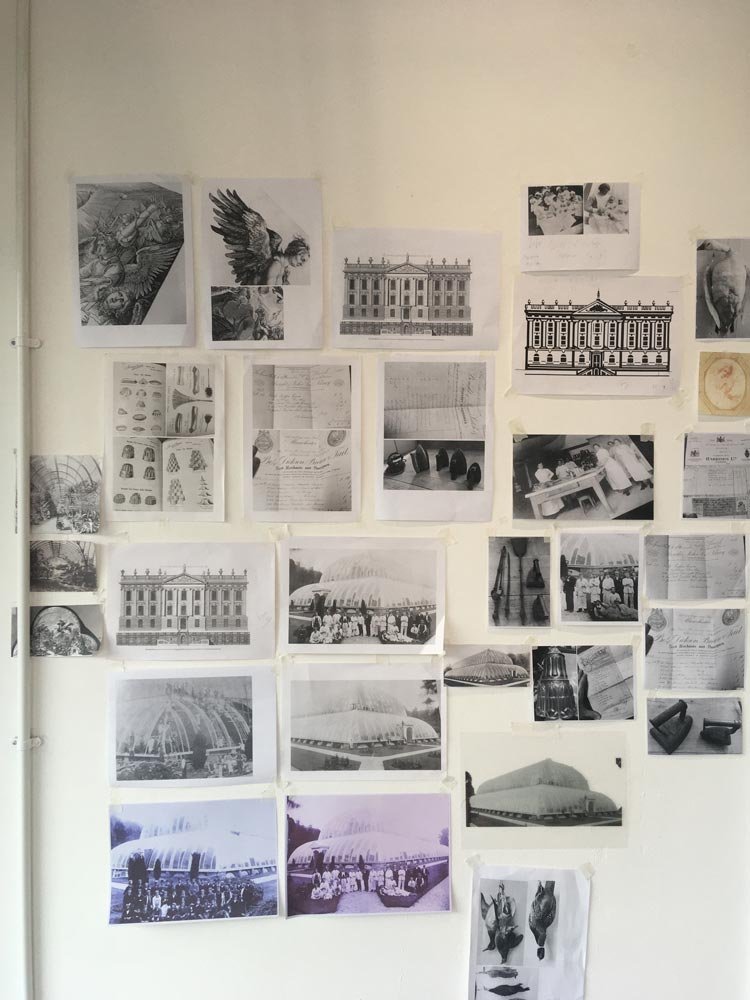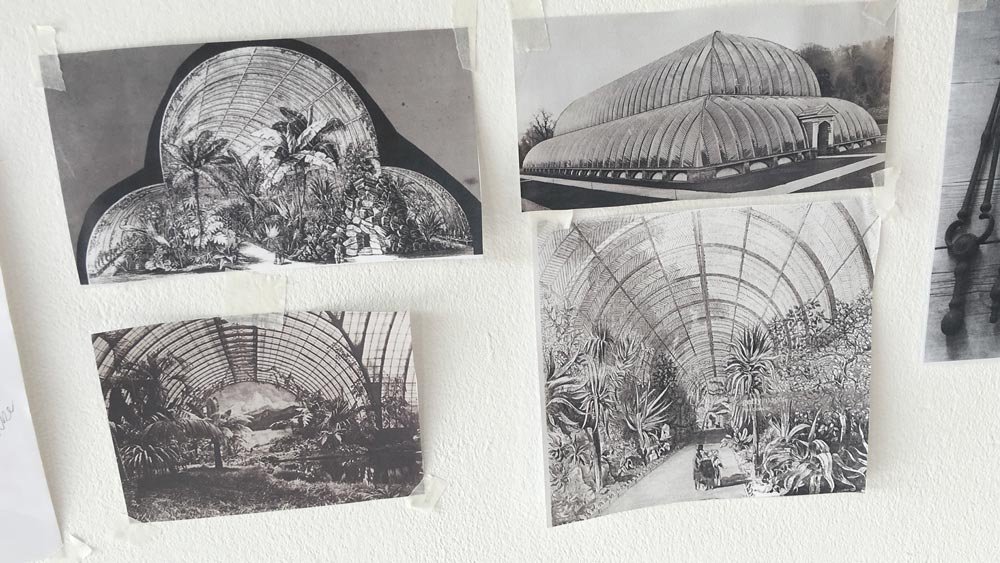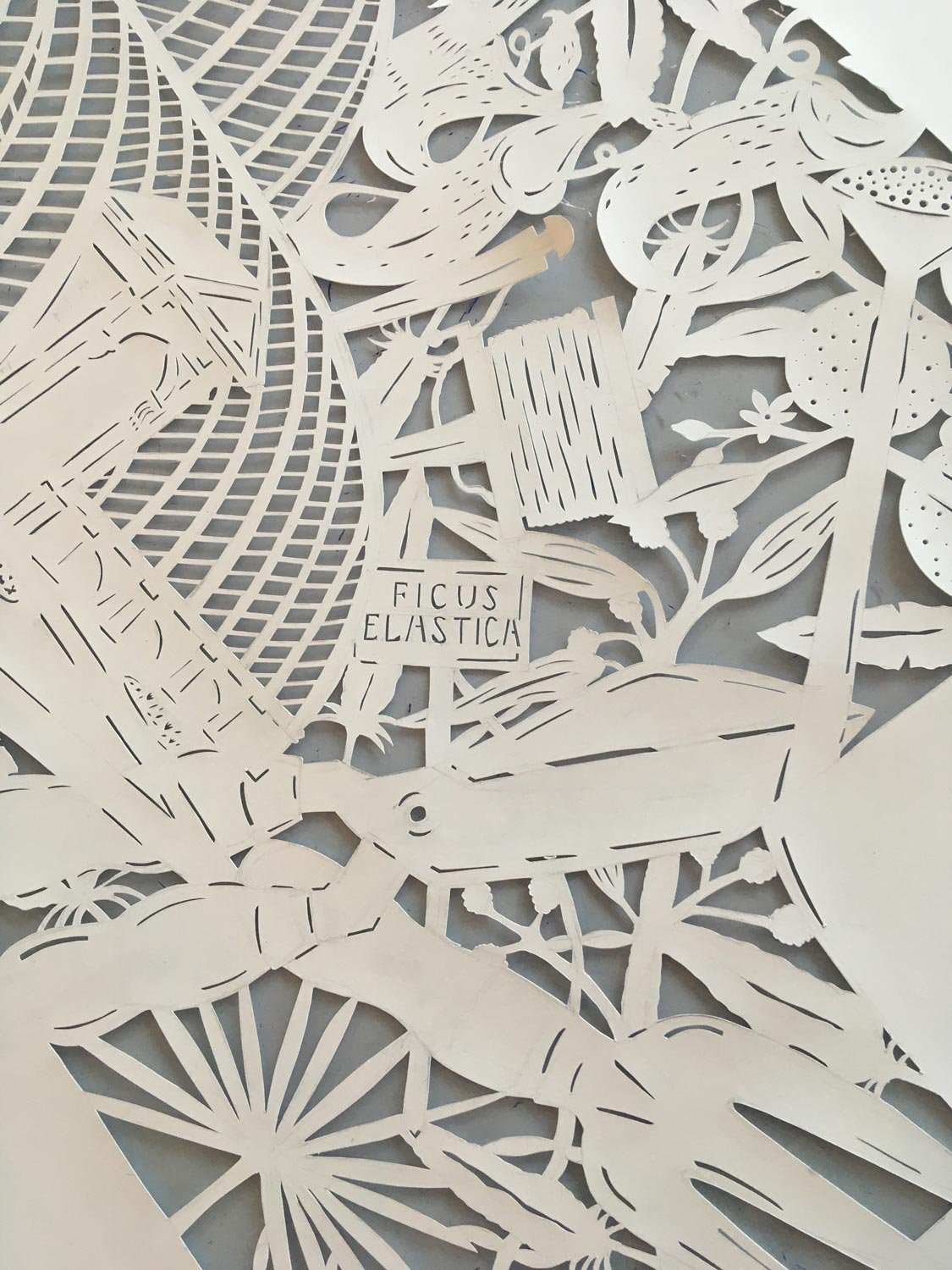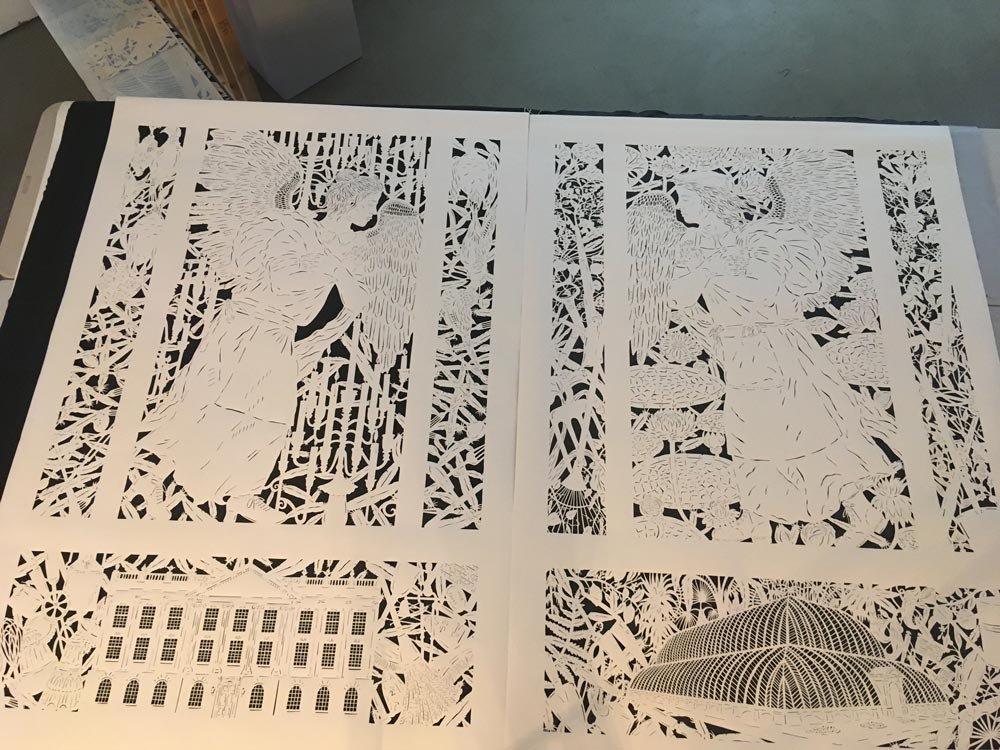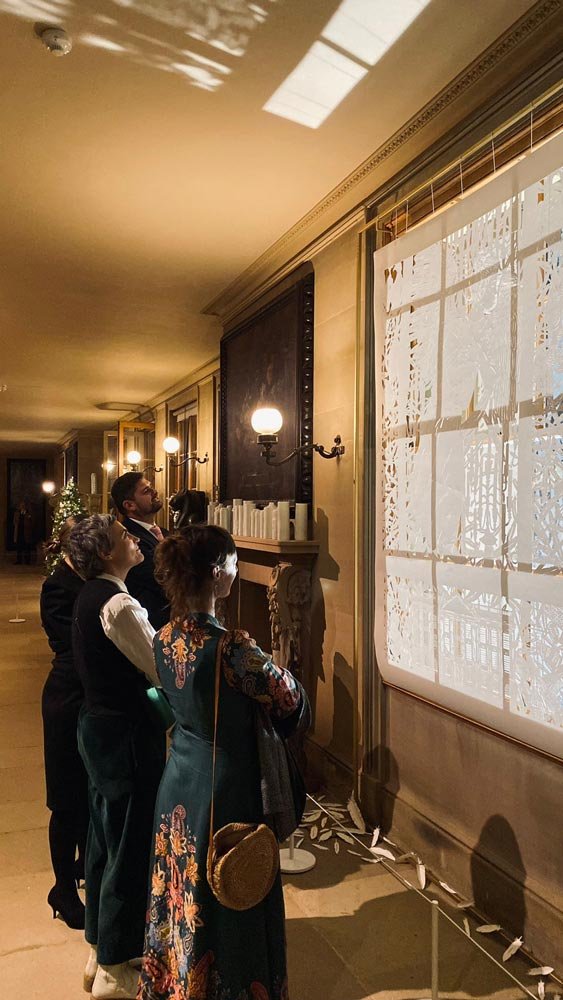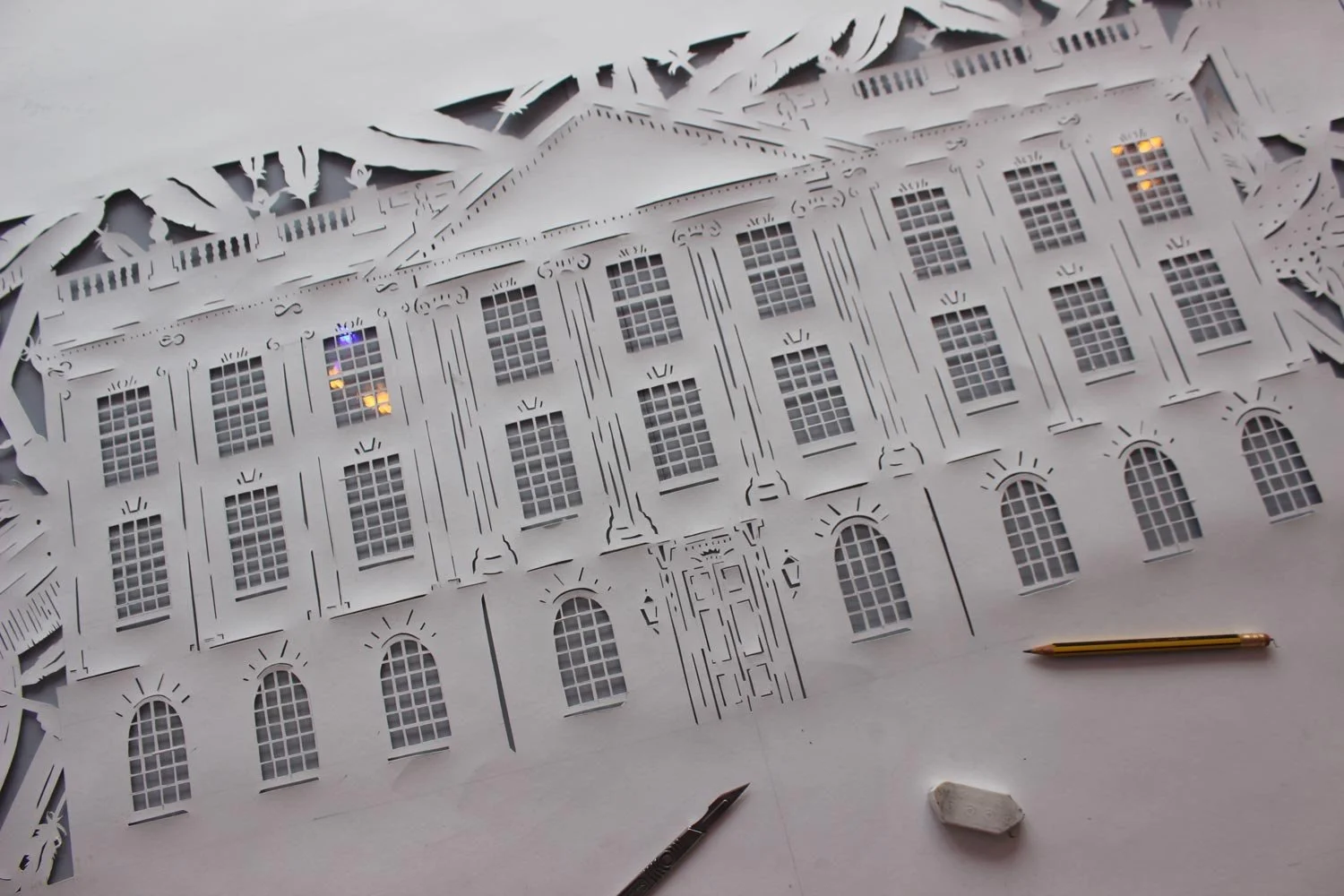Christmas at Chatsworth
A research residency for a commission for Palace of Advent 2023
In 2023 I was commissioned to make two giant ‘Angel’ papercuts that would sit in the Chapel Corridor as part of Chatsworth’s Christmas celebrations. I was given access to view historic objects as well as artworks within the archive, images of which can be viewed below. The commission was to celebrate the angelic artworks within the Devonshire Art Collection but I was interested in also grounding the work in localised stories and saw the work as an opportunity to talk about class, wealth and the labour force. Working with the Collections Team, I was able to research stories of the staff of Chatsworth. Chatsworth is still a private residence of the Cavendish Family, and although the house is cherished by visitors and locals alike there are still tricky topics around land rights and access, wealth inequality, employment and empire that I wanted this commission to examine.
I decided to explore the idea of angels as an unseen ‘care taker’ and the roles of the workers of the Estate, whose labour was often kept from sight. It’s quite hard to find historic stories of the working classes, unlike the aristocracy who can often trace their lineage to the Doomsday books, but with the help of the Collections Team we found photos, letters, medals and receipts of the tools and utensils the workers used in their daily labour and I managed to piece together something of a story. Although many workers' names weren’t recorded, only written in the ledgers as ‘day labourers’, I was able to tell their stories through the receipts for tools they would have used for their jobs. Through exploring book keeping records, diary entries, catalogues and letters I was able to pinpoint exact information about their roles. I then decided to make an ‘indoor’ angel - a maid, cook, or cleaner and an ‘outdoor’ angel- a gardener or labourer, to try and break dwon the many roles needed to keep a huge house and estate running.
I also wanted to explore the changing face of the workers, such as women starting to work in the garden during World War I as the male workforce went to war. Items such as World War I rifles can be found in the decorative borders of the artwork, and tomatoes can be seen growing from the rifles – plants Chatsworth House began to grow and sell at market as part of their war effort. Other tools that I was interested in including in the final work include gardening equipment and the families ‘Devonshire’ silver service that would have been washed, polished and set daily. Within the collection I was able to view, and then recreate in paper objects such as irons, jelly moulds and cleaning equipment.
During my research for the ‘outdoor’ angel I explored Chatsworth’s now demolised historic conservatory and the botanical plants that were recorded as growing there. The plants show the direct link of the House to empire such as the ‘Victoria amazonica’ the giant lily pad that Joseph Paxton, Chatsworth’s famous Head Gardener managed to grow successfully from seed at Chatsworth House. Originally named Victoria Regas after the newly crowned queen it’s history is muddled up with stories of botanical colonialism; with even Joseph Paxton receiving a knight of the British Empire for his growing efforts.
Detailed in the final work is a recreation of The Great Conservatory that Queen Victoria herself described as ‘the most stupendous and extraordinary creation imaginable’. I explored the histories of the plants housed within Chatsworths glass house and the complicated stories of ‘soft’ colonialism that botanic gardens all hold; from the rubber plants and other botanics, collected, uprooted, renamed and taken from across the globe, to occupy a grand conservatory for ‘show’.
Alongside this I explored the detailed blogs written by Collections Team (viewable on the Chatsworth website) that tell stories of specific workers such as Ada Booth who plucked birds in the kitchens, and Robert Randall who worked in the garden before enlisting for the First World War. The work was lastly an opportunity to elevate the unseen labour that goes on both historically in large estates and also nowadays in everyday homes at this busy festive time, particularly the unseen or unrecognised labour, often done by women, cleaning, preparing, cooking, buying and wrapping.
The residency was spent researching the work for around 6 months, and the two final artworks (which can be viewed here) were cut from 2 sheets of paper, over the course of six weeks as part of another residency ‘Testing Ground’ at Yorkshire Art Space.
